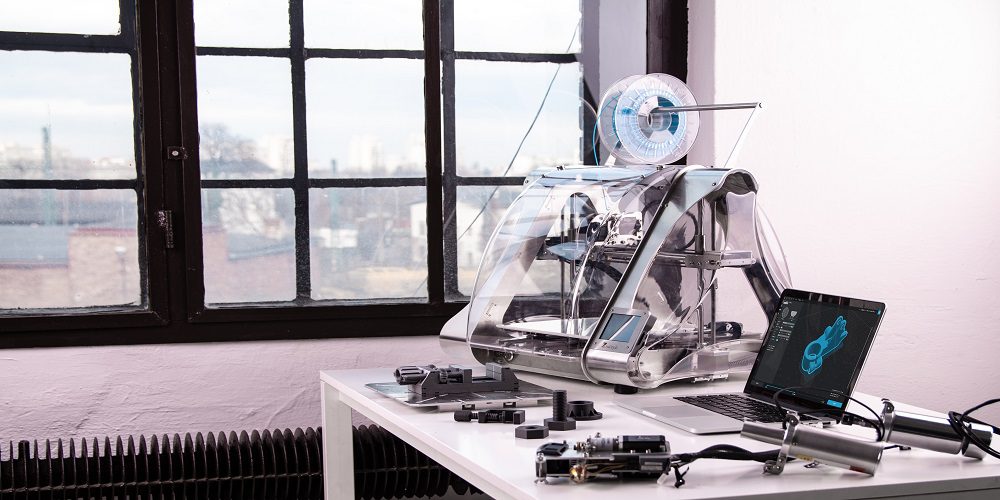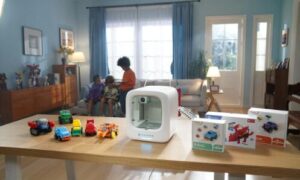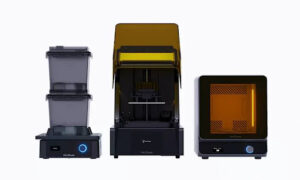Welcome to the world of 3D printing—where imagination becomes tangible, and innovation knows no bounds. Ever wondered how those intricate and awe-inspiring creations come to life? Look no further! In this blog post, we embark on an exhilarating journey as we unravel the inner workings of 3D printing technology. From its humble beginnings to the mind-boggling possibilities it presents today, join us as we break down the basics and demystify this groundbreaking phenomenon. Get ready to dive headfirst into a realm where dreams take shape layer by delicate layer—it’s time for you to become an expert on all things 3D printing.
What is 3D Printing?
3D printing technology has come a long way in recent years, and it shows no signs of slowing down. This versatile technology is used in a variety of industries, from aerospace to medical. 3D printing is also becoming increasingly popular for use in the home, as it offers a convenient way to create custom objects.
So, what exactly is 3D printing? Essentially, it is a process of creating three-dimensional objects from a digital file. The object is built up layer by layer, using materials such as plastic, metal, or resin.
There are several different types of 3D printers available on the market today. Each type has its own set of advantages and disadvantages. For example, filament-based 3D printers are typically less expensive than other types of printers, but they can be more difficult to use. Powder-based 3D printers are often faster and easier to use than filament-based printers, but they can be more expensive.
The benefits of 3D printing are vast. This technology can be used to create customized objects that would otherwise be impossible or very difficult to produce. It also offers a quick and easy way to produce prototypes and test new designs before committing to manufacturing them. Additionally, 3D printing is much less wasteful than traditional manufacturing methods, as there is very little material waste associated with it.
Different Types of 3D Printing Technologies
There are three main types of 3D printing technology: additive, subtractive, and multiphotonic. Each type has its own strengths and weaknesses, so it’s important to choose the right one for your project.
Additive manufacturing is the most common type of 3D printing. It works by building up an object layer by layer from a pool of liquid or powdered material. The advantage of additive manufacturing is that it can create complex shapes that would be difficult or impossible to make using other methods. The disadvantage is that it can be slower and more expensive than other methods.
Subtractive manufacturing is the opposite of additive manufacturing. It starts with a block of material, and then removes layers to create the desired shape. Subtractive manufacturing is faster and cheaper than additive manufacturing, but it can only be used to create simple shapes.
Multiphotonic printing is a newer type of 3D printing that combines aspects of both additive and subtractive manufacturing. It works by first creating a three-dimensional negative of the desired object using ultraviolet light. Then, material is added layer by layer to fill in the negative and create the final product. Multiphotonic printing is faster than additive manufacturing and can create more complex shapes than subtractive manufacturing, but it is also more expensive.
Advantages and Disadvantages of 3D Printing
When it comes to 3D printing technology, there are a variety of advantages and disadvantages that must be considered. On the plus side, 3D printing can be used to create highly customized products that would be otherwise difficult or impossible to create using traditional manufacturing methods. Additionally, 3D printing is relatively quick and easy to set up, meaning that businesses can get started with this type of production without a huge upfront investment.
However, there are also some disadvantages associated with 3D printing technology. One of the biggest is that it can be quite expensive to produce large quantities of items using a 3D printer. Additionally, the quality of items produced by 3D printers can vary considerably, which can be a problem for businesses who need to produce consistent results.
Material Options with 3D Printing
3D printing technology has come a long way in recent years, and there are now a wide variety of material options available for use with 3D printers. In general, the three most common types of materials used in 3D printing are plastics, metals, and ceramics.
Plastics are the most commonly used type of material in 3D printing, due to their relatively low cost and easy availability. ABS plastic is one of the most popular plastics used in 3D printing, due to its high strength and durability. PLA plastic is another popular choice, as it is made from renewable resources and is biodegradable.
Metals such as aluminum, stainless steel, and titanium can also be used in 3D printing, though they are typically more expensive than plastics. Metals can provide superior strength and durability compared to plastics, and are often used for functional or structural parts that need to withstand high loads or stress.
Ceramics can also be used in 3D printing, though they are not as commonly used as plastics or metals. Ceramic materials can be strong and durable like metals, but they are often brittle and can be difficult to work with.
Applications of 3D Printing
3D printing technology is being used in a variety of industries and applications. Some of the most popular applications of 3D printing include:
-Prototyping: 3D printing is often used to create prototypes of products or parts. This allows companies to test out designs before investing in expensive tooling or manufacturing processes.
-Customization: With 3D printing, it’s possible to create highly customized products. This is perfect for businesses that need to produce unique items or for individuals who want to create one-of-a-kind items.
-Manufacturing: In some cases, 3D printing can be used to directly manufacture final products. This is often done with small batch sizes or when traditional manufacturing methods are not viable.
-Education: 3D printers are increasingly being used in schools and universities as a teaching tool. They allow students to gain hands-on experience with product design and engineering principles.
Challenges Faced by the 3D Printing Industry
Despite the many benefits of 3D printing technology, the industry still faces a number of challenges that need to be addressed. One of the biggest challenges is the high cost of 3D printers and materials, which can prohibitive for many consumers and businesses. Additionally, the technology is still relatively new and there is a lack of standardization across different manufacturers, meaning that it can be difficult to find compatible parts and materials. Another challenge is the time it takes to print items – often hours or even days – which can make on-demand printing impractical for many applications. Finally, 3D printed items are often not as strong or durable as those made with traditional manufacturing methods, meaning that they may not be suitable for all applications.
Conclusion
3D printing technology is a powerful tool that can be used to create intricate and complex pieces of art. By breaking down the basics and understanding how it works, we are able to gain a better appreciation for this groundbreaking technology. From professionals creating life-saving medical equipment to students designing new toys, anyone with access to a 3D printer can reap the benefits of its versatility. It’s no wonder why 3D printing has become one of the most widely adopted technologies in recent years – with its seemingly endless possibilities, there truly is something for everyone.



































